
Phulkari Ghungroo Bagh Dupatta Fulkari Duppatta Multi Punjabi Etsy
Phulkari refers to the folk embroidery of Punjab. It is made of two words: Phul means 'flower' and a kari means 'shape'. Phulkari meant the shape/direction of flowers that symbolized life. Traditions In Punjab, there is a belief that the birth of girl child in the family was auspicious.
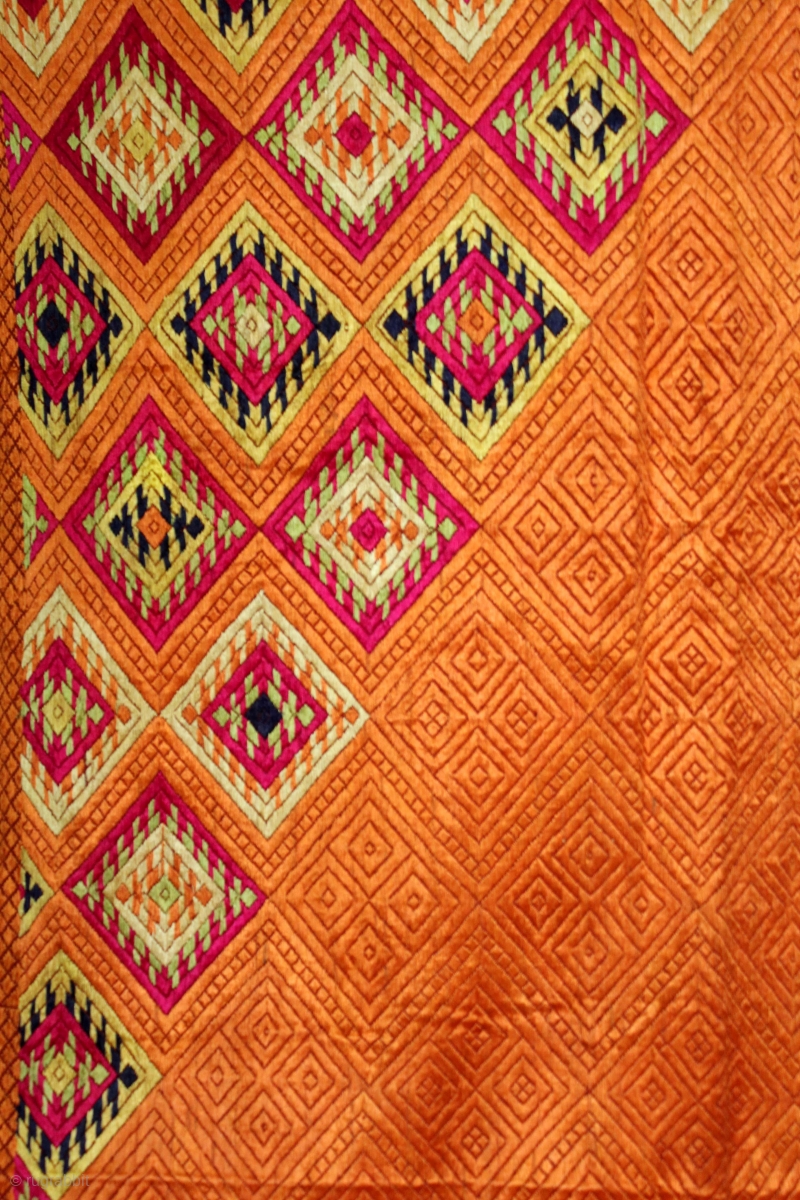
Phulkari From West (Pakistan)Punjab India Called As VariDaBagh.Rare Ghunghat Design.Floss Silk
Phulkari was considered auspicious and was generously used in wedding trousseau. The Process.. Ghunghat Bagh, also known as sari-pallau, is essentially used to cover the head as a symbol of respect for elders. There is embroidery on the small border in four sides. A large triangular motif is embroidered at the center of each side, making it.

Phulkari From West(Pakistan)Punjab.India.known As VariDaBagh,Very Rare influence of Multi
Ghunghat Bagh is a type of Bagh in Phulkari Embroidery but designed with a large triangle. Triangle patterns vary from piece to piece, but are usually geometric. The rest of the Ghunghat Bagh is usually made plain with a border design that matches the triangular design. 4.Darshan Dwar
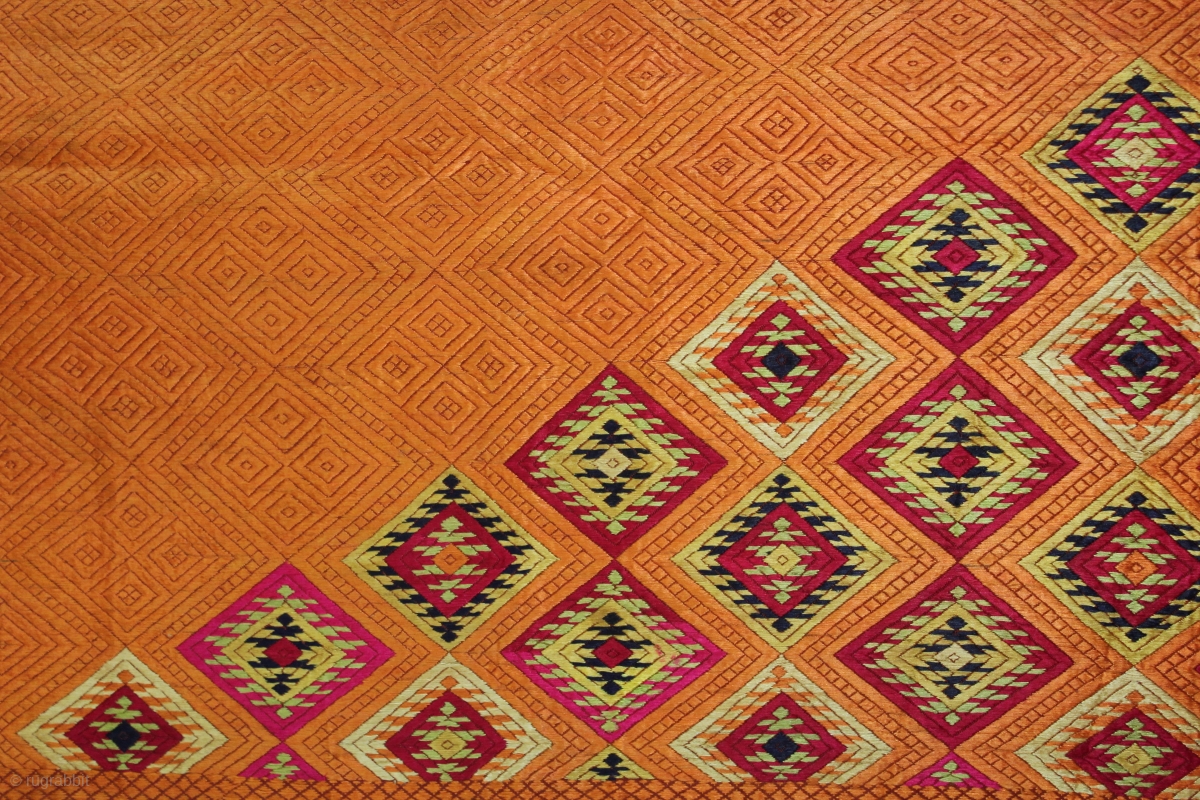
Phulkari From West (Pakistan)Punjab India Called As VariDaBagh.Rare Ghunghat Design.Floss Silk
Different Phulkari designs are reserved for different occasions. While Chope is a gift from the maternal uncle to the bride, the Wari da Bagh represents happiness. Similarly Chamba, Suber and Ghunghat Bagh all have a specific meaning and value attached.
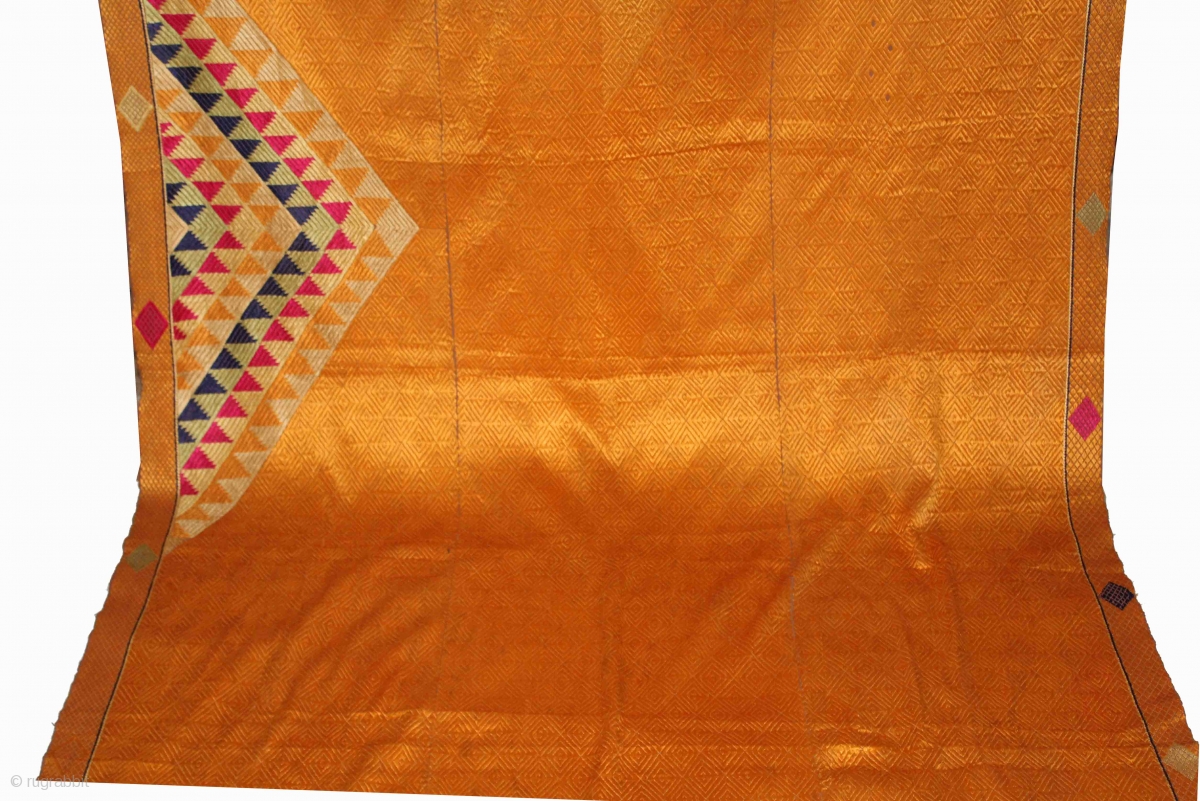
VariDaGhunghatBagh from West (Pakistan) punjab India Called As Panch Ranga Ghunghat. One of
The various types of phulkari and bagh are named after the pattern they are embroidered with. The first type which falls in this group of textiles but is completely different is the chope.The chope is a wrapper in a red khaddar embroidered with Holbein stitches with a pattern representing the dangling bridal accessory worn with the bangles called kalire.

673 White Chand Bagh Lehariya Border Phulkari Indian Textiles Antique textiles, Antiques
Phulkari and Bagh . An intricately embroidered suit . Phulkari is generally done on fabrics used to cover the head like dupattas, scarves and shawls. Whereas, Bagh pattern is done on garments that cover the whole body.. Ghunghat Bagh: It is specially done as a head adornment. So, once it is pulled down to cover the face, it looks like a veil.
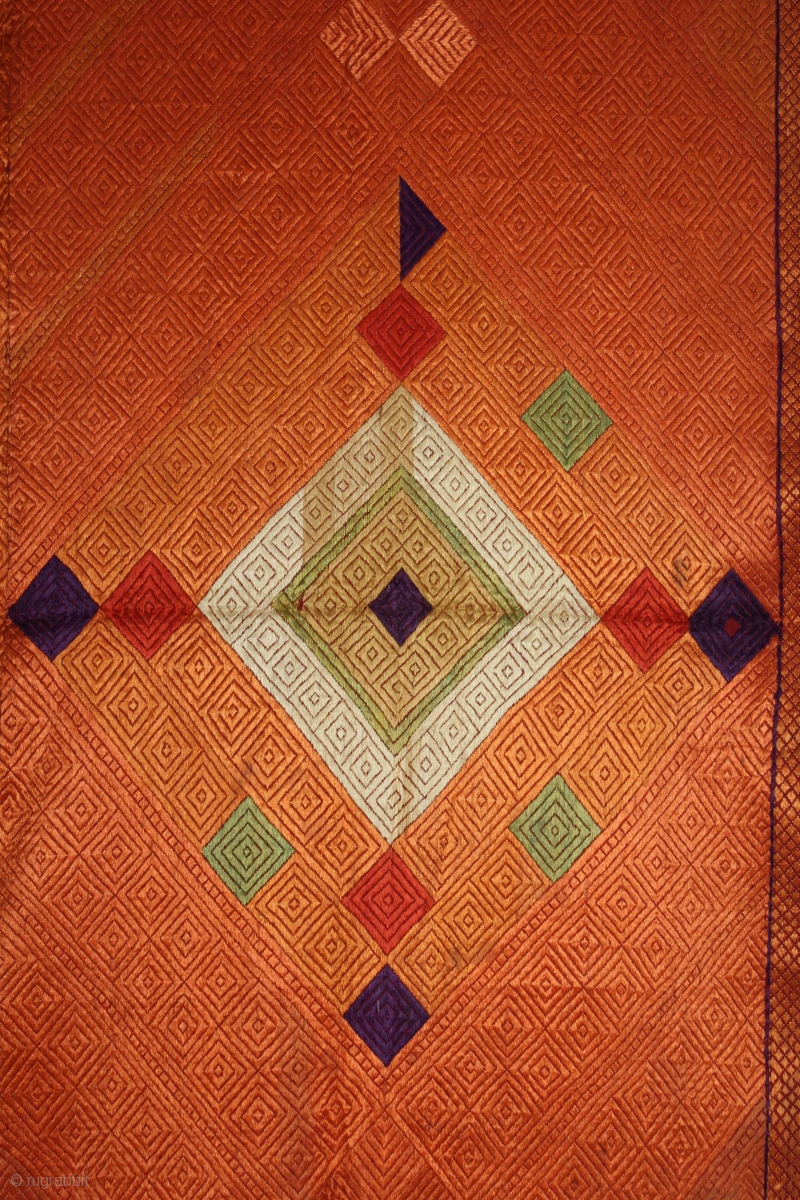
Phulkari From West (Pakistan)Punjab India Called As VariDaBagh.Rare Design Ghunghat.Floss Silk
A variation of the ghunghat bagh is the sar pallu, which has large, elaborately decorated borders on the short sides of the garment. The pattern on the triangles varies from piece to piece, although it is usually geometric. The rest of the ghunghat bagh is typically a single colour, with the border design matching the design on the triangle.
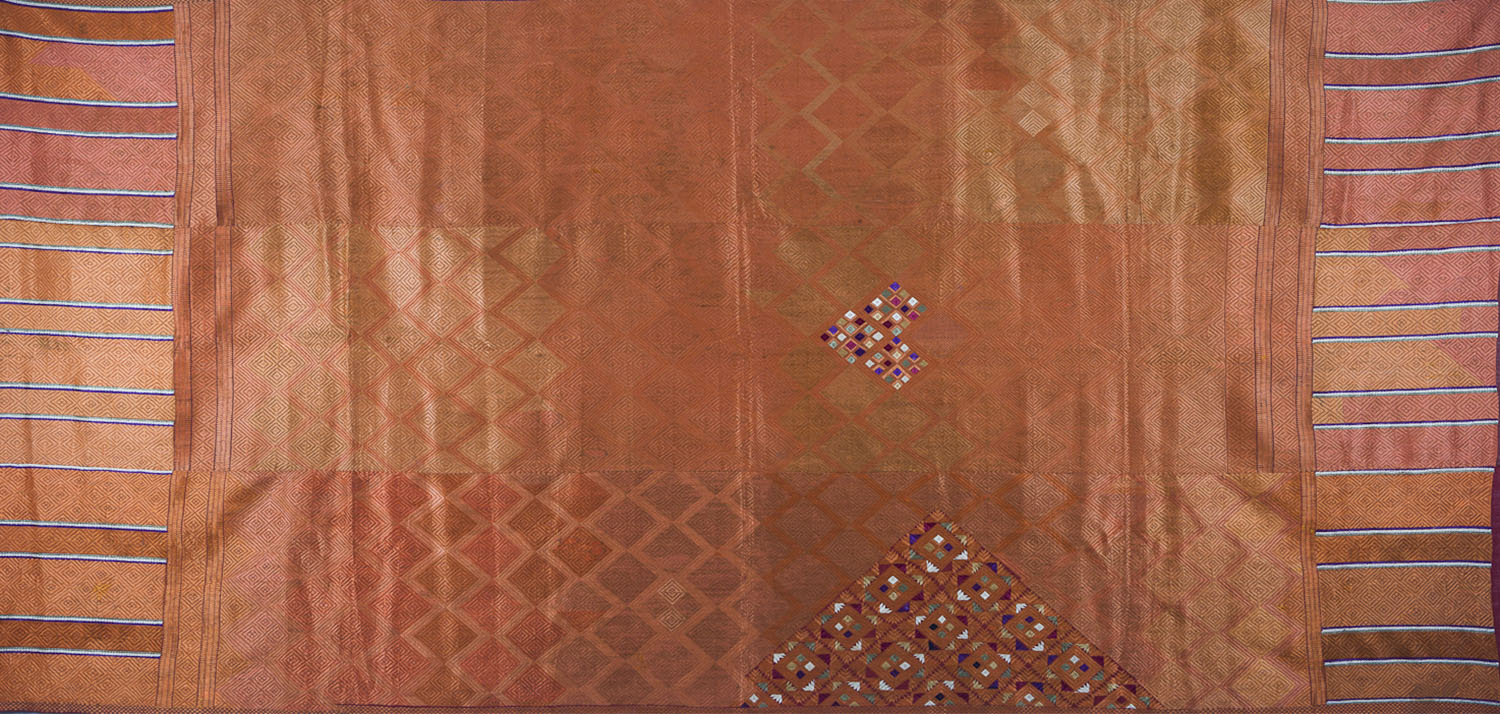
Ghunghat Bagh Encyclopedia of Art Textiles from Punjab
The color of the phulkari is mixed with metals. Ghunghat Bagh Originating in Rawalpindi, the Ghunghat Bagh is heavily embroidered around the center on the edge to be worn over the head. The embroidered center is then pulled over the face to form an embroidered veil. Chhamaas The Chhaamas phulkari hails from Rohtak, Gurgaon, Hissar, and Delhi.
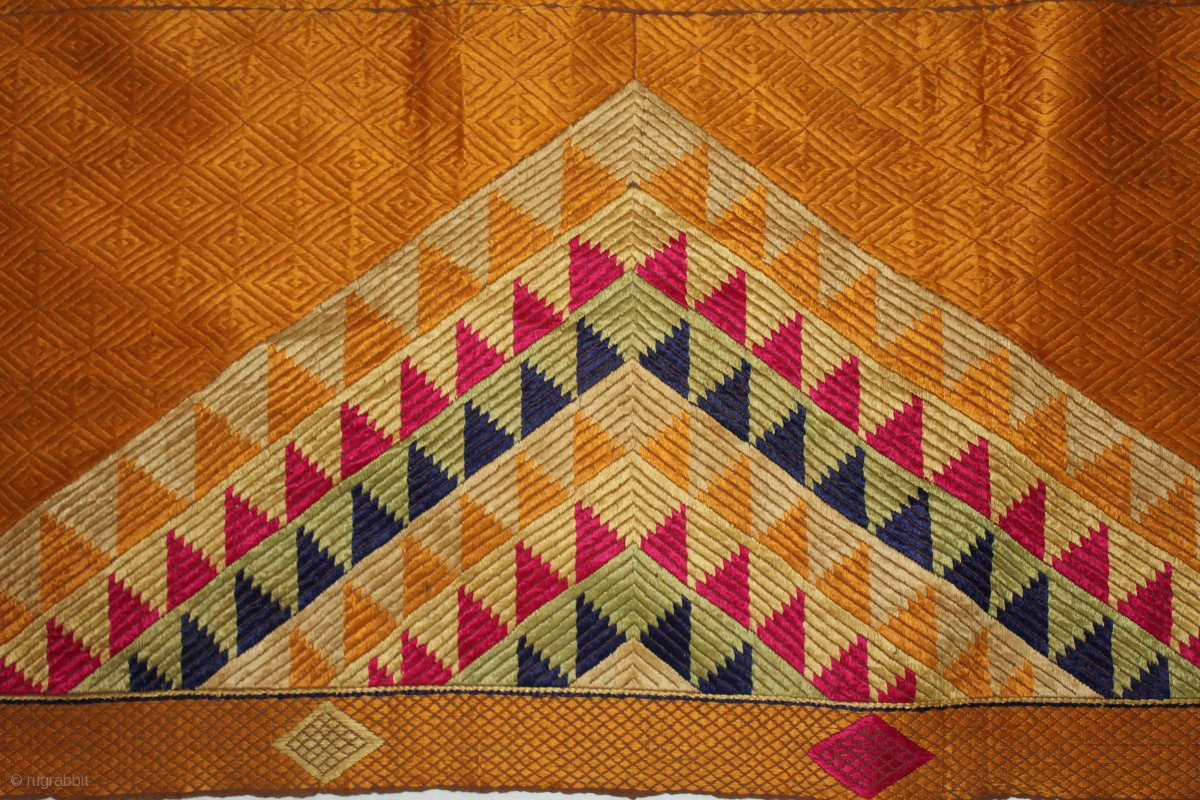
VariDaGhunghatBagh from West (Pakistan) punjab India Called As Panch Ranga Ghunghat. One of
Phulkari translates as flower-work, and it is the generic term for the folk embroidery form of Punjab both in India and Pakistan. Its embroidery follows the warp and weft of its canvas, khaddar fabric; its yarn is handspun on spinning wheels and then handwoven.

Fine Antiques & Art from WOVENSOULS Singapore 673 Antique White Chand Bagh Lehariya Border
Phulkari ( Punjabi: ਫੁਲਕਾਰੀ) refers to the folk embroidery of the Punjab. Although Phulkari means floral work, the designs include not only flowers but also cover motifs and geometrical shapes. [1] The main characteristics of Phulkari embroidery are use of darn stitch on the wrong side of coarse cotton cloth with coloured silken thread.
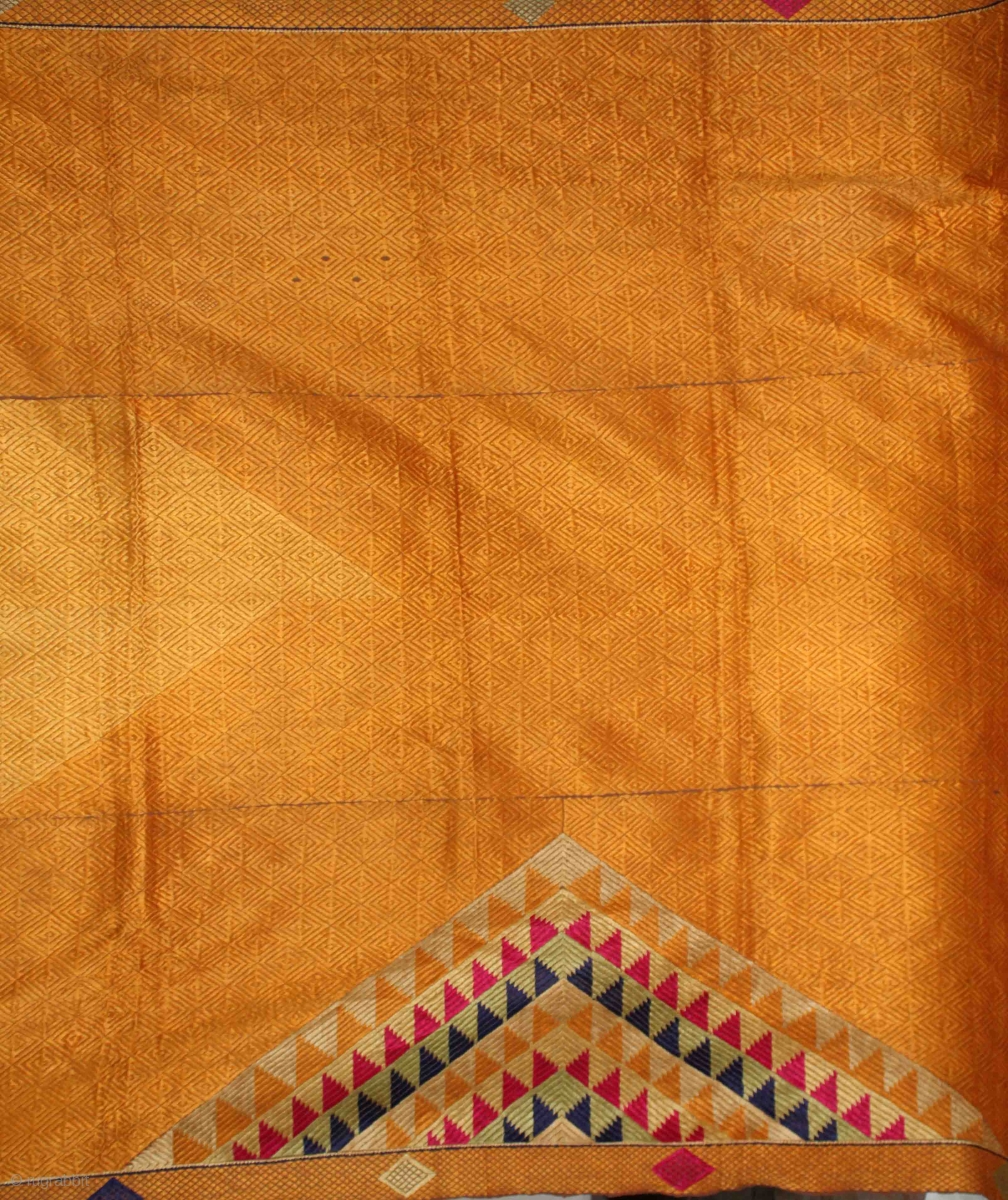
VariDaGhunghatBagh from West (Pakistan) punjab India Called As Panch Ranga Ghunghat. One of
Phulkari utilized khaddar/khadi as the base fabric. This base fabric was available in three varieties, such as khaddar, which was loosely spun and coarsely woven; chaunsa khaddar, a comparatively better variety; and halwan, a light weight and finely woven khadi fabric. The average size of the phulkari and bagh is about 230 x 138 cm. Threads
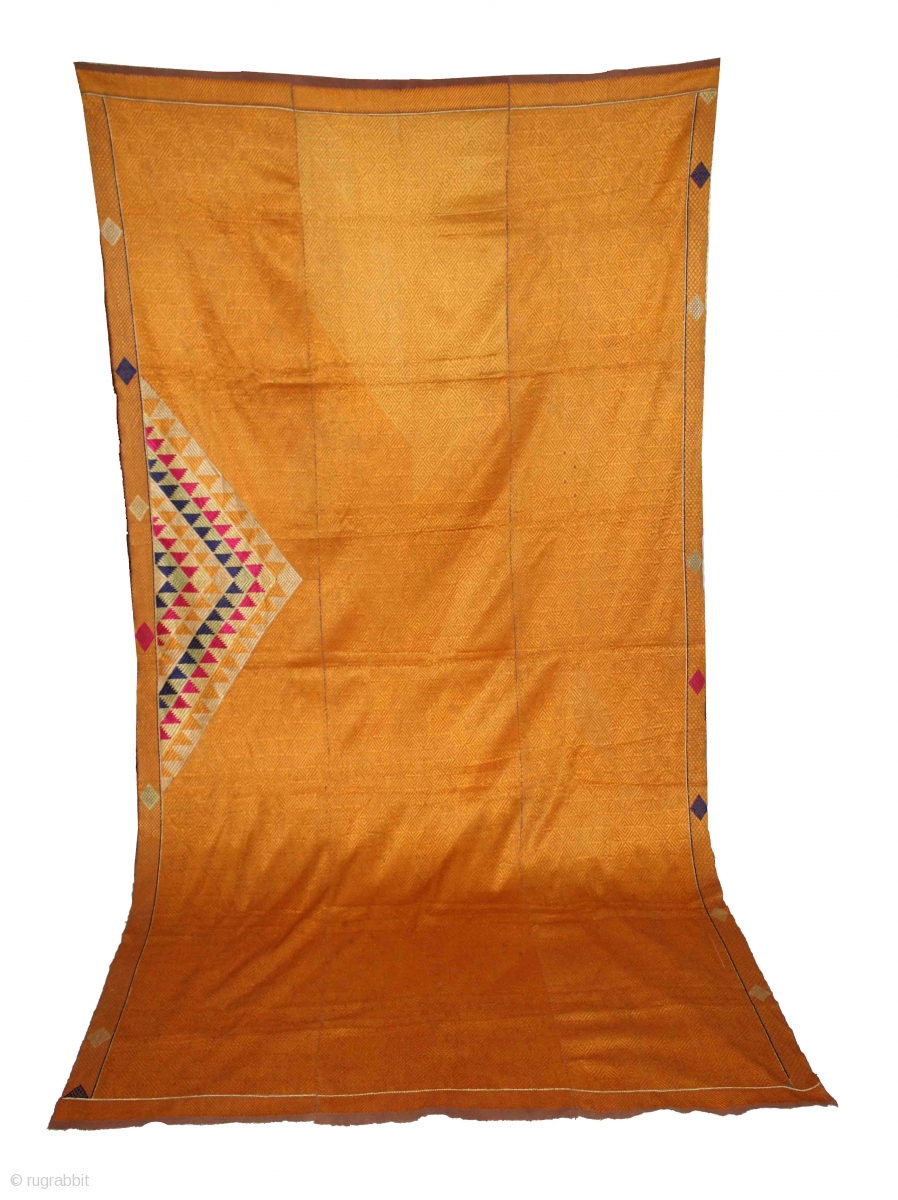
VariDaGhunghatBagh from West (Pakistan) punjab India Called As Panch Ranga Ghunghat. One of
1. Bagh A style where the whole surface is embroidered. Numerous designs are made through horizontal, vertical and diagonal stitches. The designs are mainly inspired by what embroiderer has witnessed around them.
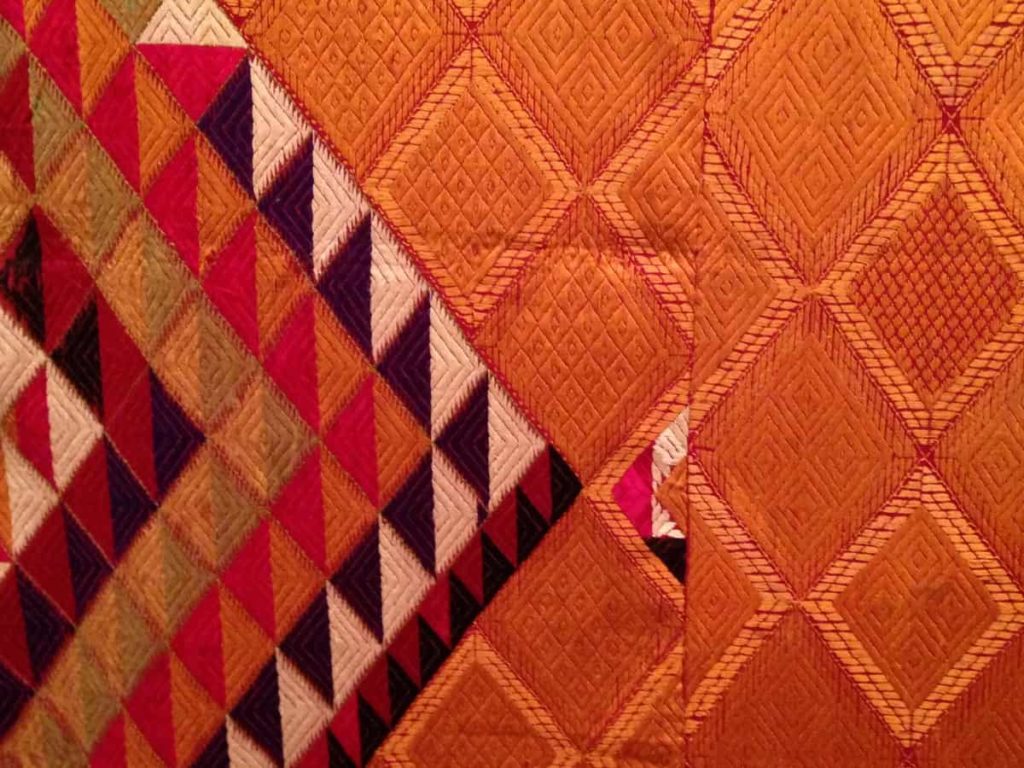
Detail of Ghunghat, WariDaBagh, photo by Gopika Nath Garland Magazine Garland Magazine
Bagh is the traditional embroidered shawl from Punjab that is made for special ceremonies like weddings. It is mostly used as a canopy during the wedding and then gifted to the bride. It's a symbol of happiness, prosperity and well being of a woman. One bagh takes about 2-3 months to embroider. Now-a-days, Baghs are used as wall décor or.

Phulkari From West(Pakistan)Punjab.India.known As VariDaBagh,Very Rare influence of Multi
Ghunghat Bagh: A special type of three cornered shawl used by the bride to cover her head. It is a traditional shawl to draw ghunghat (Veil) in presence of elderly people. The embroidery is done in triangular patches. In eastern Punjab a similar bagh is known as sar-pallu, it has elaborate embroidery.. The bagh phulkari are associated with.
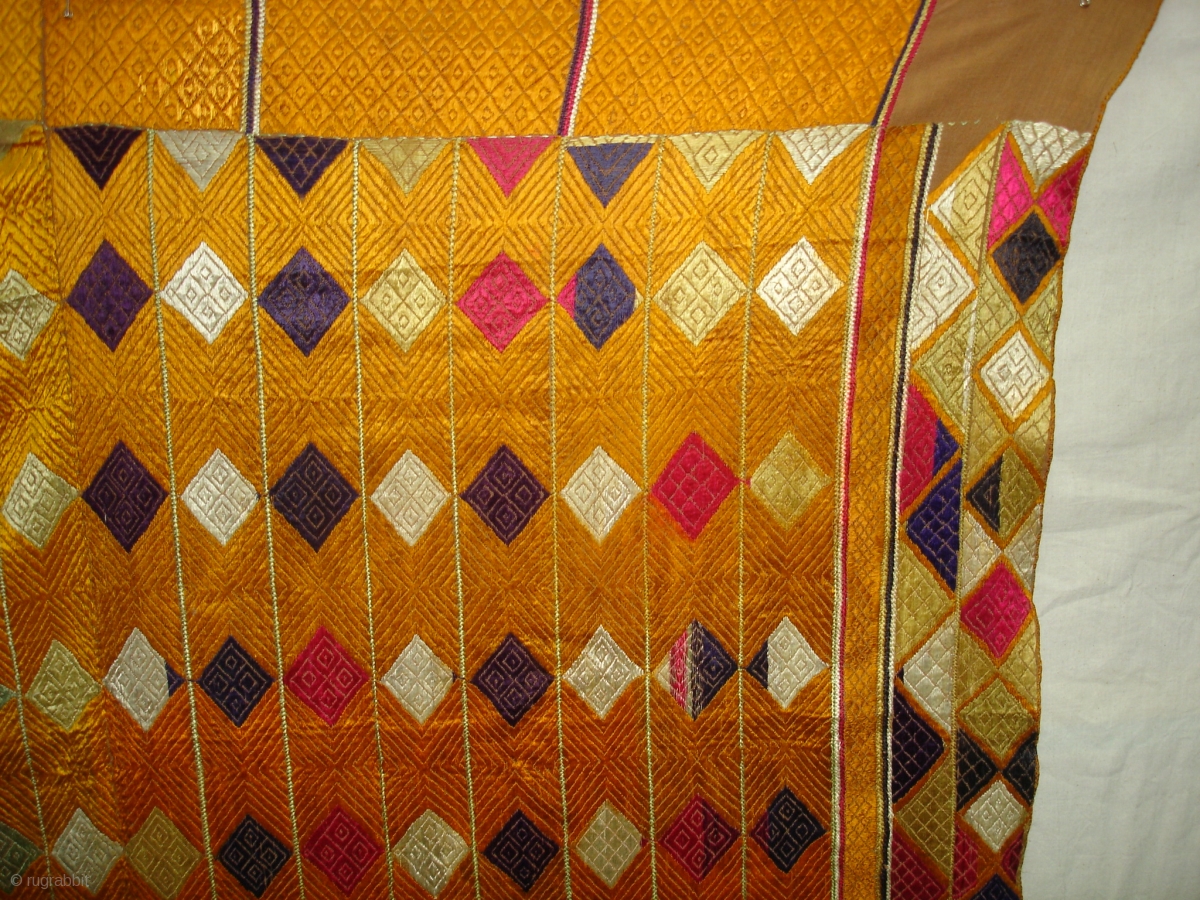
Phulkari From West(Pakistan)Punjab.India.known As VariDaBagh,Very Rare influence of Multi
Phulkari is a vernacular term in Punjabi/Urdu speaking regions of North india (undivided) and it means flower work or crafted floral pattern. Similarly, Bagh is a vernacular term which means garden, used to describe a style of embroidered fabric.
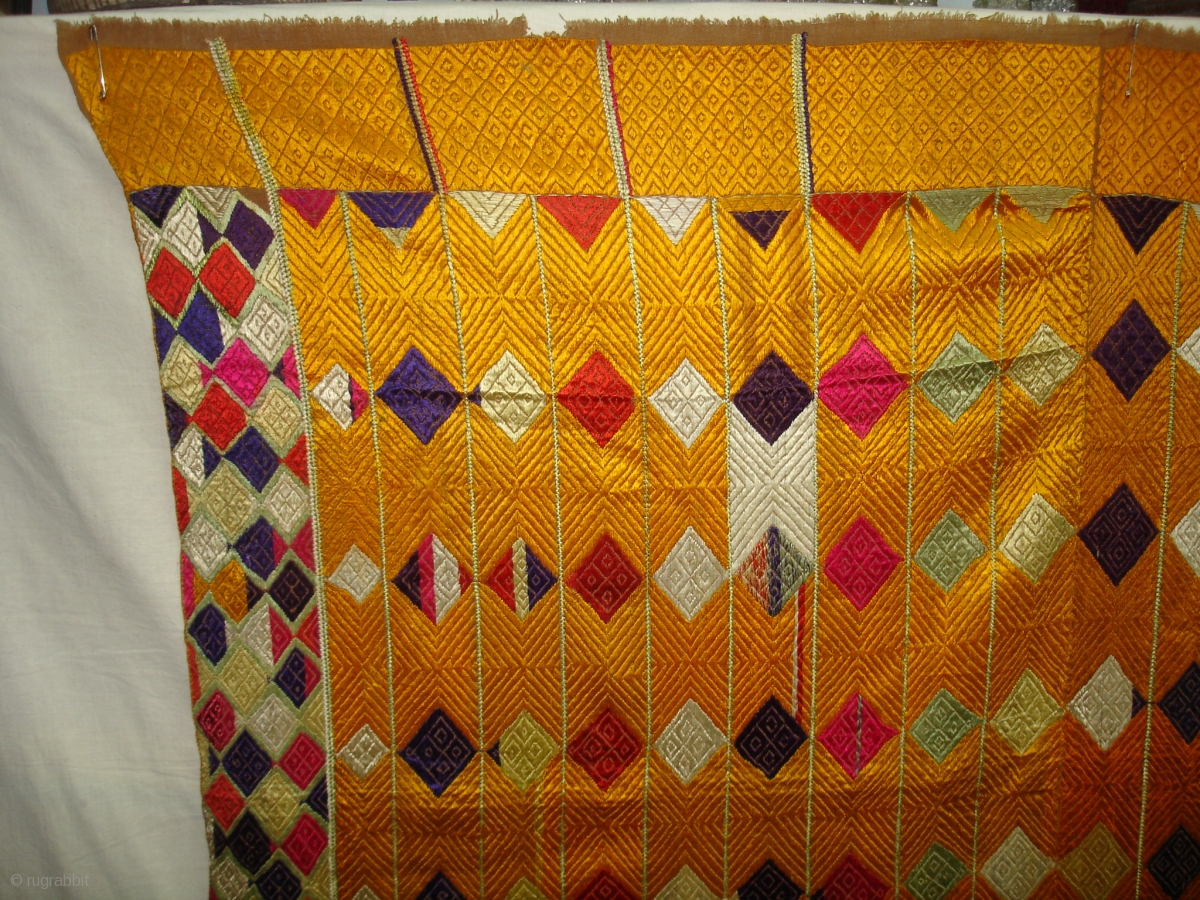
Phulkari From West(Pakistan)Punjab.India.known As VariDaBagh,Very Rare influence of Multi
Sangrur, a primarily farming district, suffered considerable loss through mass suicide of farmers. With at least one suicide a day for years, the numbers were staggering and often left illiterate and malnourished women, both young and old, burdened with their husbands' debts, without any means of earning.